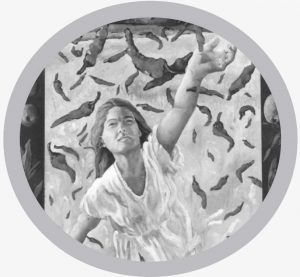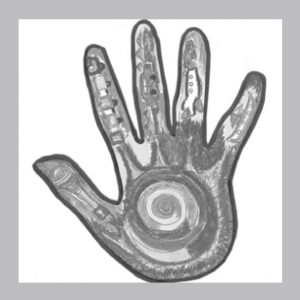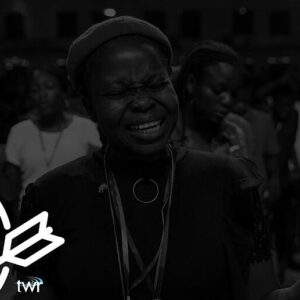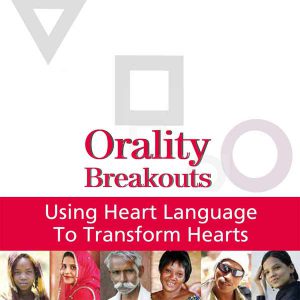The following is a chapter from the book ‘Orality Breakouts – Using Heart Language to Transform Hearts‘. A chapter will be posted here each week.
Chapter 17 – The Crescendo of Local Arts in Orality
By Robin Harris and Frank Fortunato
Since it was already March in this Siberian town, the beginnings of spring could be felt in the air. The sun again shone brightly after several months of somnolent hibernation, and the frigid temperature outside the one-room log church had risen to a tolerable twenty degrees below zero. A young singer sat in the comfortable, traditional “performer position” for this genre—her legs crossed at the knees, leaning forward on one elbow. She lifted her powerful voice and in a deep contralto, began to recite the biblical story of creation in Sakha1 poetic form. The gathered cluster of Sakha people, bundled in fur coats against the now-forgotten chill, unconsciously leaned toward the rising crescendo of the narrative, gripped by the astonishing, undeniable appeal of the drama enacted before them.
This performance was radically different from any story heard within the walls of this humble one-room church building. It was, in fact, the first-ever telling of the biblical story of creation set in the genre of olonkho. This epic song-story-poetic form has for centuries expressed, more than any other genre, the values, history, and worldview of the Sakha of Siberia. It had never, however, been heard in a church building.
Although epic olonkho genre is celebrated among the Sakha, it took some time to enter the faith expression of the church. As an ethnomusicologist connected to this community for over a decade, I had dreamed of seeing biblical stories set in the style of olonkho and was thrilled to observe the reactions of the listeners as they responded together to the high points of the story-song with the traditional “Eyhhh!”
 The Sakha are providing a reproducible and sustainable model for other Siberian people groups in their use of contextualized artistic forms to communicate truth and tell God’s story. But for many practitioners, the use of music and arts in orality ministries seems to be an incredibly intimidating, complex, and “specialists only” type of endeavor.
The Sakha are providing a reproducible and sustainable model for other Siberian people groups in their use of contextualized artistic forms to communicate truth and tell God’s story. But for many practitioners, the use of music and arts in orality ministries seems to be an incredibly intimidating, complex, and “specialists only” type of endeavor.
Are music and the arts an integral and necessary part of orality strategies or are they simply an afterthought? This chapter will address this and other issues related to music and the arts in orality. We’ll begin by proposing a rationale for the use of music and the arts and give a few examples of what’s being done in this arena. Finally, we’ll suggest opportunities for networking, resources, learning, and encouragement.
A proposed rationale
So why bother with music and the arts? Brian Schrag2 describes characteristics of artistic communication that reveal its crucial importance to mission. He also gives insight into why artistic expressions are often the most powerful and enduring means of communication within a culture:
Artistic communication is distinctive in that it explores a medium’s formal characteristics to create, modify, expand, and shape messages (including stories). The intentional use of form sets artistic expressions apart from everyday speech.
Artistic activity draws on (and reflects) cultural patterns and symbols. Locally-derived arts are thus more easily understood in that context than arts invoked from other traditions.
Artistic expressions seldom occur alone; usually there is some combination of dance, music, costumes, drama3 , verbal arts4 , visual arts, or ornamentation.
Artistic rendering enriches the reception of a message. Tapping into local artistic expressions allows new messages of truth to be marked as particularly important, uniquely memorable, and distinctly engaging.
Local arts are often already mastered by community members, in contrast to writing systems that often require the acquisition of new skills and cultural patterns.
In addition to the reasons mentioned above, many crosscultural workers find that in some communities anti-foreign and antiWestern feelings have historically hindered the Christian message from being received from outsiders. But the use of local arts and music in the faith expression of the church has contributed to a surge in the growth and health of local churches.5 What follows are a few of those stories.
A story from Africa
Imagine the moment in an African country when civil war breaks out, forcing the Jesus film team to suddenly leave the area. Six years pass without any word of the spiritual seeds sown. Then, one day, a man who had accompanied the teams on the film showings meets a national staff person from the project.
The visitor begins, “You know, I was with you the month that you and your team showed the Jesus film. I watched it every night. In fact, I memorized it.” Reaching into his pocket, he pulls out eighteen well-worn sheets of paper filled with words. They contain the story line of Jesus’ life—set to music. He had written a song from the words of the film! It was all there: the Lord’s birth, teachings, miracles, death, and resurrection. Like most oral societies, he had a tremendous power of recall and had created an effective evangelistic tool for his culture.
He revisited the areas where the teams had shown the film and began to teach his Jesus film song to the people. It went from person to person and heart to heart. The team’s long years of disappointment and frustration soon exploded into praise. Seeds planted during their ministry and through one believer’s song had grown into forty-eight new churches!
A story from Pakistan
Daniel, a blind Pakistani, loved to sing. He needed an art form that would help him evangelize and teach. Eventually he discovered kuwwali, an indigenous devotional song form used by Sufi mystics. It employed antiphonal (call and response) singing. This was easily adapted into storytelling through music. In one all-night kuwwali songfest in an open courtyard, Daniel taught the stories of the Bible through music, beginning with Adam and Eve. It was a perfect communication technique for people who could not read. Daniel was blind physically, but his whole being radiated the light of the indwelling Christ as he sang.
A history of music and arts in mission
These two stories, and thousands more like them, are cause for celebration. We’ve come a long way since the days when missionaries found it far simpler and “safer” to pack their hymnals in their luggage and eventually teach their known songs using locally-translated lyrics. There have always been exceptions (e.g., Francis Xavier, Robert de Nobili, and Narayan Vaman Tilak [India]). The most common pattern, however, has been using foreign artistic languages to communicate biblical truth.
In the Western Evangelical world the tide started turning back in the 1960s with the efforts of Vida Chenoweth, a concert marimbist. Chenoweth began a new career as a linguist and went to a tribal group to translate the New Testament, developing ethnomusicology concepts for missionary musicians along the way. This led to her starting the ethnomusicology degree at Wheaton College.
Influenced by her teaching and writing, many missionaries began to study applied ethnomusicology and found those tools to be a key to effective cross-cultural work.
In the 1980s, various international agencies like Youth With A Mission (YWAM) and Operation Mobilisation (OM) incorporated songs from Majority World communities into their international gatherings and music outreaches. In the late 1980s the Lausanne Movement released one of the first ethnic songbooks. David Garrett and others started encouraging international gatherings of indigenous peoples with celebrations using their various local songs, dances, and costumes. During the 1990s, the AD2000 Movement started a global task force devoted to ethnic worship and the arts. The 1997 Global Congress on World Evangelization (GCOWE 97) included a track devoted to worship and the arts for the first time. SIL developed a journal called EM News devoted mostly to the music of ethnolinguistic communities.
Also in the mid-1990s, music missionary Dave Hall developed a series of theological articles about ethnic and global worship and created the term ethnodoxology.6 Eventually, SIL’s EM News was replaced by the Ethnodoxology Journal (published by Artists in Christian Testimony). In 1996, the U.S. Center for World Mission (USCWM) released a landmark issue of their Mission Frontiers7 journal that dealt with ethnodoxology. Several new arts ministries traced their roots to that one journal issue.
In 2003 and 2006, the Global Consultations on Music and Missions featured seminars devoted to oral approaches using music and arts. A team of ethnodoxology practitioners launched the International Council of Ethnodoxologists (ICE), a network that within a few years grew into a global fellowship of hundreds of associates serving in dozens of nations and agencies. The Lausanne Forum for World Evangelization’s Issue Group on the Arts released the comprehensive “Redeeming the Arts” document,8 followed by Colin Harbinson’s Stoneworks, a global arts partnership for cultural reformation and the recovery of the imagination in the life and mission of the church.
Many forward-thinking mission agencies are now embracing arts and music in ways unheard of just decades ago. For example, Artists in Christian Testimony sends out bi-vocational arts missionaries around the world. YWAM is developing schools for ethno-arts training. OM started ArtsLink and DanceLink. Many agencies, such as OM’s Heart Sounds International9 and WEC International’s Resonance help local believers release artistic expressions through arts festivals, new song concerts, and indigenous recordings. The Summer Institute of Linguistics, Inc. (SIL), the agency that began decades ago to catalyze local and contextual expressions of heart music and arts, continues to stay on the cutting edge, partnering with the Graduate Institute for Applied Linguistics to train their workers and other graduate students to become ethnic arts consultants worldwide.
 From frigid Siberia to the stifling tropics of Indonesia, with all the nations and islands in between, the crescendo is building, the tempo quickening, moving steadily toward that exhilarating moment when all redeemed humanity joins the million of angels expressing their devotion to the Triune God in His glory. It will involve the vast mosaic of all redeemed peoples using all their redeemed artistic expressions in an unending symphony of eternity.
From frigid Siberia to the stifling tropics of Indonesia, with all the nations and islands in between, the crescendo is building, the tempo quickening, moving steadily toward that exhilarating moment when all redeemed humanity joins the million of angels expressing their devotion to the Triune God in His glory. It will involve the vast mosaic of all redeemed peoples using all their redeemed artistic expressions in an unending symphony of eternity.
“Next steps” for connecting to training and resources
The use of music and the arts in orality strategies may require the acquisition of new tools and a willingness to collaborate with locally-available arts specialists or through virtual networking. Many resources are available, including undergraduate10 and graduate11 programs, print and media resources for the non-specialist,12 and networks for media and arts in orality.13 Email info@worldofworship. org for information, or to join the rapidly expanding movement of Christians around the world who are incorporating culturally appropriate music and arts in their ministries.
Notes
1 Sakha is the self-name for the indigenous people in the Republic of Sakha (Yakutia), Northern Siberia. In the Russian language, they are referred to as Yakut.
2 Brian Schrag, “Why Local Arts are Central to Mission,” International Journal of Frontier Missiology, 24, no.4 (2006): 199-202. See www.ijfm.org/PDFs_IJFM/24_4_ PDFs/199_Schrag.pdf (accessed 14 July 2010).
3 Julisa Rowe, in her dissertation on “Ethnodramatology” (Western Seminary, 2004), addressed a variety of cultural drama styles and demonstrated the importance of understanding and utilizing local styles in dramatic portrayals of Scripture stories.
4 Pete Unseth (SIL) studied the effective use of proverbs in oral communication and says, “Local proverbs are often used in entertaining ways, but their most serious use is often in persuasion, whether in a legal setting or haggling a price in the market. When we want to persuade people to embrace God’s truth, we need to learn how to use some suitable local proverbs in appropriate ways.” Personal communication with Robin Harris, 30 July 2009.
5 Frank Fortunato, with Paul Neeley and Carol Brinneman, All the World Is Singing: Glorifying God through the Worship Music of the Nation (Tyrone GA/Bucks, UK: Authentic, 2006).
6 Ethnodoxology is the study of the worship of God among diverse cultures.
7 See Mission Frontiers, May-June 2007, http://www.missionfrontiers.org/.
8 Lausanne Committee for World Evangelization, 2005, “Redeeming the Arts: The Restoration of the Arts to God’s Creational Intention.” Lausanne Occasional Paper No. 46. Produced by the Issue Group at the 2004 Forum for World Evangelization hosted by the Lausanne Committee for World Evangelization in Pattaya, Thailand, 29 September to 5 October 2004.
9 For a starting point for resources available, contact the authors through Heart Sounds International, http://heart-sounds.org/.
10 Moody Bible Institute (Chicago, Illinois) and All Nations Christian College (England).
11 The Graduate Institute of Applied Linguistics (GIAL) in Dallas, Texas, features an ethno-arts concentration in their MA program. Similar training is available at the European Training Program (England) and Payap University (Thailand); Fuller Theological Seminary offers a number of courses for those in orality ministries or for training in music and arts; Liberty University’s MA in Ethnomusicology offers longdistance courses along with a summer residence requirement, which is convenient for missionaries on home assignment; and International Council of Ethnodoxologists one-week graduate course in Ethnodoxology is offered on a regular basis at various seminaries in the USA (see http://www.worldofworship.org/Training/seminars.php).
12 Frank Fortunato, with Paul Neeley and Carol Brinneman, All the World Is Singing: Glorifying God through the Worship Music of the Nations; Brian Schrag and Paul Neeley, eds., All the World Will Worship: Helps for Developing Indigenous Hymns (3rd ed.); “Redeeming the Arts: The Restoration of the Arts to God’s Creational Intention,” Lausanne Occasional Paper, no. 46, http://www.lausanne.org/ documents/2004forum/LOP46_IG17.pdf (accessed 14 July 2010); “Sounds of Global Worship”—the YouTube Channel for Heart Sounds International: http://www. YouTube.com/user/HSIOM (accessed 14 July 2010).
13 Music and Arts Task Force of the International Orality Network; International Council of Ethnodoxologists; http://www.worldofworship.org (largest virtual library in the world for ethnodoxology); and Arts and Mission Task Force of the World Evangelical Alliance Missions Commission, email [email protected] for information.
Biography
Robin Harris is Co-Founder and Executive Director of the International Council of Ethnodoxologists (ICE). She serves with OM’s Heart Sounds International, focusing on music research and ministry in Russia. She is writing a PhD dissertation on the Siberian storytelling-song genre olonkho. The Harrises have been cross-cultural workers since 1984 and lived in Russia for a decade.
Frank Fortunato serves as the International Music Director for Operation Mobilization and coordinates Heart Sounds International, a ministry promoting indigenous worship through seminars, songwriting events, and recordings, mostly in restricted parts of the world. His publications include All the World is Singing—Glorifying God through the Worship Music of the Nations.
« Tracking the Orality Movement Sharing stories, sharing the Gospel »




